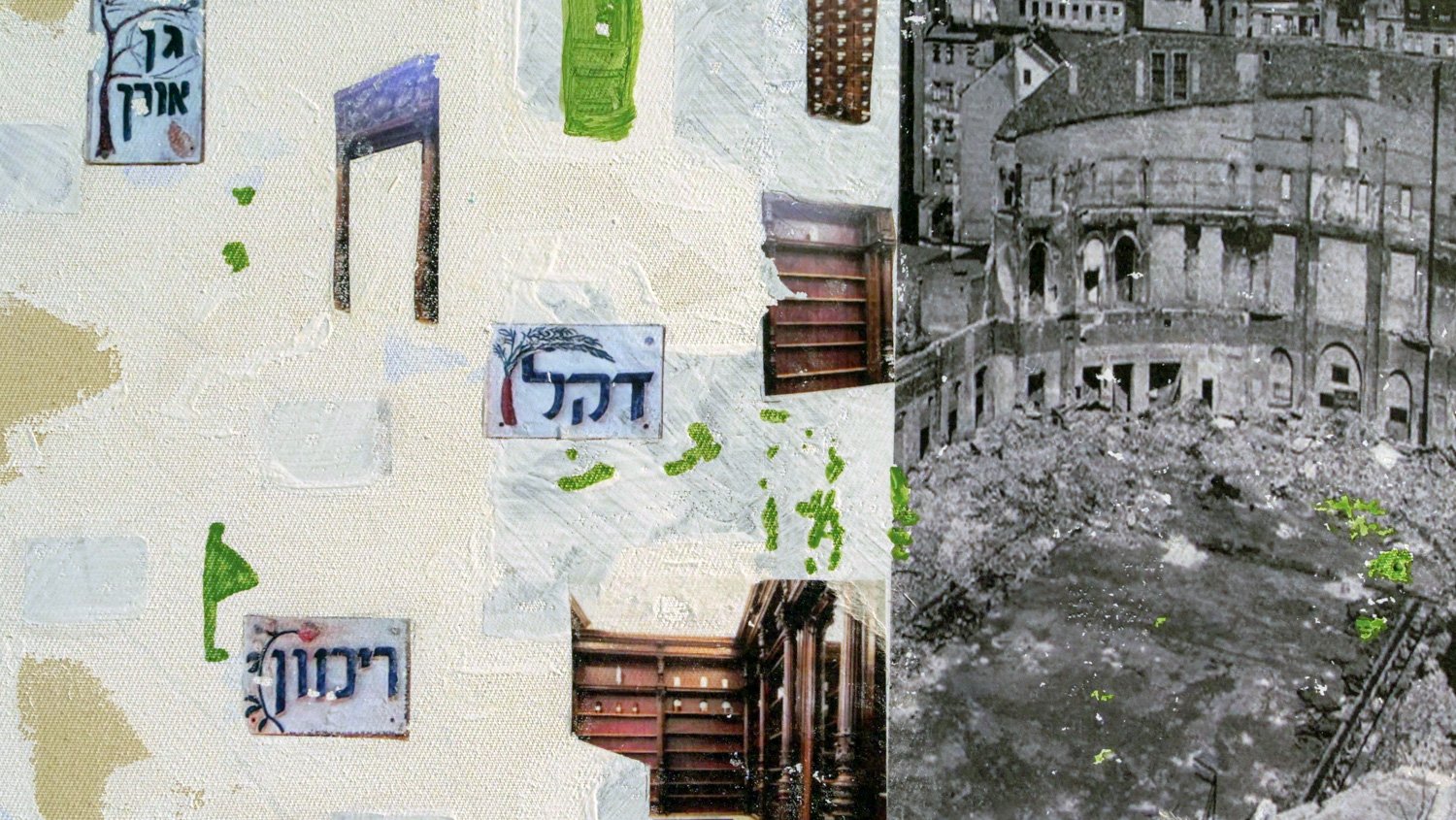
Exodus II
Exodus II unfolds as a distant seascape, stretched into a horizon. The abstracted sea—a place of passage, danger, and hope—becomes a symbol of the no-longer-here and not-yet-there: an uncertain space between connection and separation. Partially hidden text fragments—memories of Laufer’s father as a child refugee aboard the Exodus 1947—invite close attention.

Exodus I
Exodus traces the fragile, shifting nature of memory through a fragmented seascape — a threshold between hope and uncertainty, escape and entrapment. Drawing on the childhood recollections of Laufer’s father, a refugee aboard the Exodus 1947, the work moves between personal memory and collective narratives, where even the smallest recollections carry the weight of history

Ikvot
Building on Yaakov, Ikvot overlays personal text on a historically layered wall at Kunstverein Nürnberg. Once home to modernist geometry, then Nazi iconography, the wall now bears traces of both. My work partially conceals it, creating a quiet dialogue about memory, visibility, and inherited space.

Unicorns
Unicorns explores motherhood, transmission, and the unspoken stories passed between bodies. Emerging from her daughter’s whimsical sketches of unicorns in stages of pregnancy and birth, Laufer’s unicorns echo both cave paintings and myth, becoming vessels for ancient and present narratives of creation.




Framing
A group of drawings coincidently found in an archive reveals the intergenerational trauma and an attempt to process it. Framing was created to be displayed in Germany, where Nazi symbols are illegal unless used in an educational context. Accordingly, Framing questions the possibilities and limits of education and commemoration.

Luck / O Lord
Originating from a photo of “Lucky Jew” figurines in Warsaw, this work explores stereotypes, desire, and cultural projection. Through music, poetry, and dialogue, it reflects on antisemitism and its uneasy presence in contemporary Poland.

Eine coole Socke
A chance meeting between Laufer and a 100-year-old woman uncovers intertwined childhood histories in Berlin and Kibbutz Hazorea. The work reflects on shared — yet contrasting — life stories.

Undress Cap
Based on 17th- and 18th-century men’s indoor head coverings, these objects blur the line between private and public, gender and status. Reframed as still-life subjects, they become ambiguous, almost absurd symbols.

Heavy Curtain
A collage of children’s Holocaust Memorial Day drawings from 1980s Israel. Beneath its playful surface, the curtain reveals how young children process collective trauma through distorted symbols and imagined narratives.

Elephants in the Room
Created during a yearlong project at the Jewish Museum Berlin, this work reflects on the unspoken tensions within a group of artists from diverse backgrounds, including recent refugees. The shared space carried a silent awareness — an unaddressed “elephant in the room.


OST: Research
A fictional audio guide to Thessaloniki, mixing historical fragments, interviews, and poetic instructions with Israeli songs based on Greek melodies. It evokes a city both familiar and estranged, a world left behind.


The Guardian / Sycamore Group
A drawn short story based on 1970s caretakers’ diaries from Kibbutz Hazorea. It reveals the quiet loneliness of both children and night-shift caretakers in communal children’s homes.

Moden Spiegel (Fashion-Mirror)
An installation on Berlin’s Kurfürstendamm honoring fashion illustrator Lieselotte Friedländer. Laufer redraws her 1920s fashion drawings and repositions them in their original location, tracing both her success and her erasure under the Nazi regime.

Masterpieces
Hundreds of black-and-white drawings made during visits to the British Museum, later assembled into a totem-like structure. The work forms Laufer’s personal “collection within the collection.

Meine Geschichte
An artist’s book reworking Fanny Lewald’s 19th-century autobiography by cutting and rearranging its’ text. The resulting novelette creates a rhythmic, fragmented portrait of a moody 30-year-old woman.